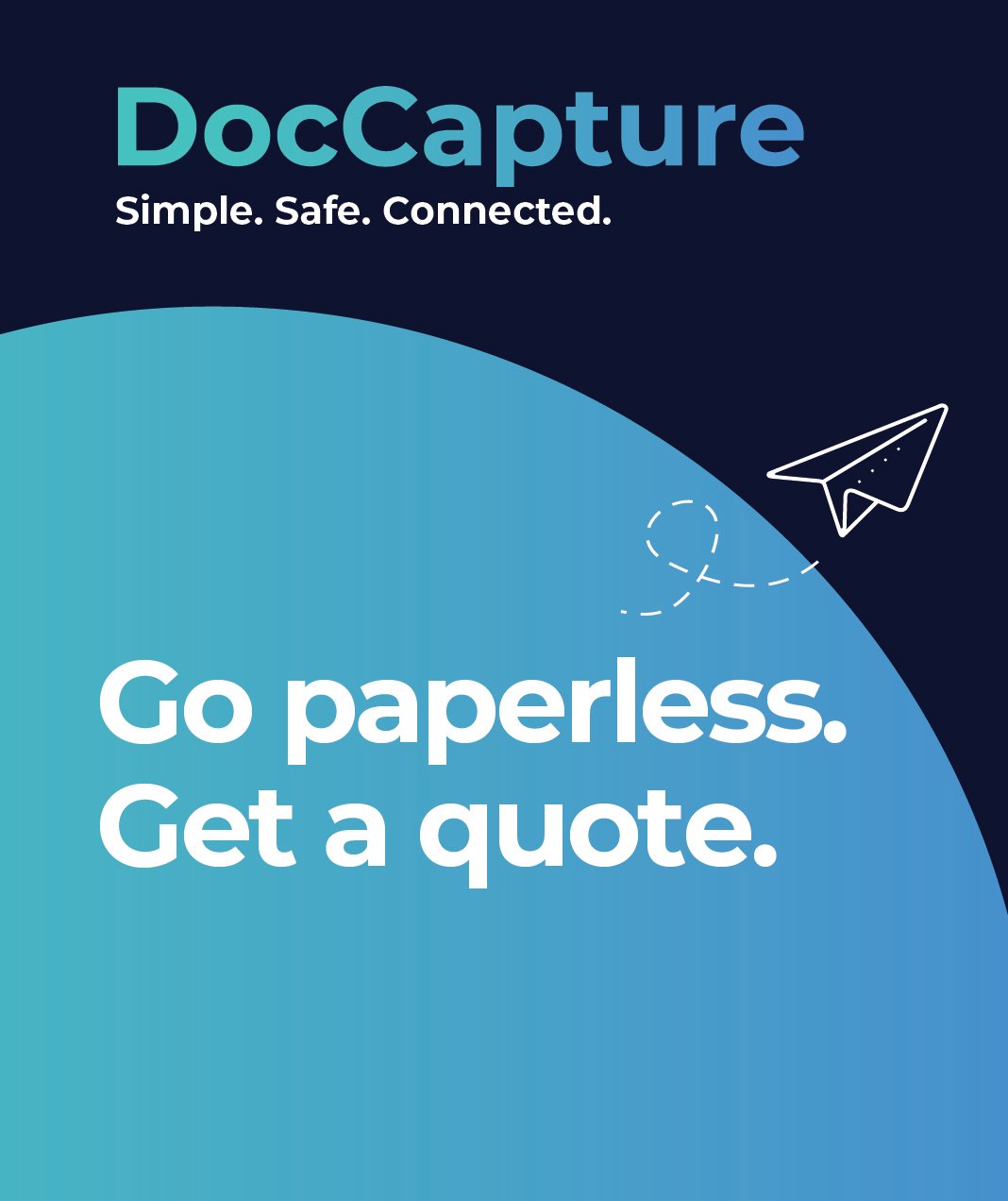Streamline Government Workflows: Efficient Document Scanning Practices
Table of contents
In an era of rapid digital evolution, many government agencies are still constrained by outdated paper-based workflows. Filing cabinets brimming with decades-old documents and manual retrieval processes not only slow productivity but introduce critical risks—from data breaches to compliance violations. As pressure mounts on public sector leaders to modernize, document scanning emerges as a foundational step in streamlining government workflows and unlocking real efficiency.
For IT managers, records officers, and transformation leaders across the public sector, digitization isn't just a technical upgrade—it's a strategic shift toward faster service delivery, increased transparency, and better allocation of taxpayer dollars. Yet, making that shift effectively requires more than just purchasing scanning equipment. It demands secure, scalable, and compliant solutions designed for the complexities of government operations.
DocCapture understands these challenges and delivers document scanning solutions tailored to meet strict public sector standards. From state and county agencies to local departments, DocCapture helps government offices digitize with confidence—paving the way for improved workflows, simplified compliance, and significant cost savings.
In this article, we’ll explore how document scanning is transforming government workflows, spotlight best practices for success, and show why DocCapture is the trusted partner for your digital journey.
The Current Challenge: Outdated Paper-Based Systems
Despite the growing emphasis on digital transformation, many government offices continue to rely heavily on physical documents. This reliance not only bogs down operations but introduces significant inefficiencies and risks in today’s digital-first environment. Whether it’s a permit request, tax record, or historical archive, retrieving paper documents can mean hours of digging—slowing down response times and frustrating both staff and citizens.
The challenges go beyond inconvenience. Physical document storage incurs substantial costs in terms of space, organization, and maintenance. Moreover, paper records are inherently vulnerable—to misplacement, natural disasters, and unauthorized access. In an age where compliance regulations are becoming increasingly stringent, the risks associated with unmanaged paper files can’t be overstated.
From a compliance standpoint, failure to maintain secure and accessible records can result in audit issues, legal liabilities, and a lack of transparency. Many public sector offices have already faced scrutiny over delayed records access or data exposure due to outdated systems.
A move toward digital solutions isn’t just a modern convenience—it’s a necessity. Government agencies at all levels need to eliminate paper bottlenecks and transition to efficient, secure digital workflows.
For a closer look at these challenges and opportunities across various government levels, explore:
Why Government Workflows Need Digital Transformation
Public expectations for government efficiency and transparency are higher than ever. Citizens now expect the same level of digital convenience from public services as they do from private sector experiences—quick access to information, seamless communication, and secure transactions. However, many government offices remain hindered by legacy systems and fragmented document storage, limiting their ability to serve effectively.
Digital transformation through document scanning addresses this gap by enabling faster data retrieval, streamlined internal processes, and real-time access across departments. With scanned documents, public sector teams can collaborate more easily, respond to requests faster, and improve service delivery outcomes. This is especially important for agencies tasked with managing large volumes of paperwork, such as health departments, public works, and zoning offices.
Modernizing workflows isn’t just about internal efficiency—it also enhances public trust. When services are delivered promptly and records are accessible and secure, it reflects a government that is accountable and responsive.
At the same time, regulatory pressures and federal digital mandates are encouraging agencies to digitize their operations. A comprehensive scanning solution supports these initiatives, ensuring compliance while paving the way for broader modernization efforts.
For deeper insights into how digitization empowers public agencies, visit:
Document Scanning as a Foundation for Workflow Efficiency
At the heart of streamlined government workflows lies one fundamental capability: the ability to digitize and retrieve documents quickly and securely. Document scanning serves as the launchpad for this transformation, converting paper-based records into digital assets that can be indexed, searched, and shared across departments.
With high-quality scanning, agencies eliminate the need for physical storage while ensuring that information is available at the click of a button. This improved accessibility accelerates processes like FOIA requests, interdepartmental collaboration, and regulatory reporting. It also reduces the risk of errors, redundancies, and misplaced files that are all too common in paper-heavy environments.
Importantly, scanning solutions must integrate with existing IT infrastructure, such as content management systems (CMS), case management tools, or cloud-based document repositories. This compatibility ensures a smooth transition and supports agency-wide access to vital information without disrupting current workflows.
By embracing document scanning as a foundation, public sector organizations create a digital ecosystem that supports long-term growth, agility, and resilience. It’s the first step toward fully automated, efficient operations that align with evolving public demands.
For a closer look at how scanning impacts different levels of government, check out:
Best Practices in Government Document Scanning
Successfully streamlining government workflows with document scanning goes beyond simply digitizing files. To maximize value and ensure compliance, public sector agencies must follow strategic best practices tailored to their unique operational and regulatory environments.
Prioritize Security and Compliance
Security isn't optional—it's essential. Government data often includes personally identifiable information (PII), legal records, and sensitive operational details. Scanning solutions must comply with federal, state, and local data protection standards, including encryption during storage and transmission. Role-based access and audit trails are also key to maintaining document integrity and tracking usage.
Choose Scalable, Budget-Conscious Solutions
Government budgets are often tight, but that doesn’t mean sacrificing quality. The right document scanning partner offers scalable solutions that align with both your current needs and long-term growth goals. Whether you're digitizing a single department or launching an agency-wide initiative, flexibility is crucial to keep costs predictable and manageable.
Standardize Scanning Procedures and Indexing
Inconsistent file naming, scanning quality, and indexing can create digital chaos. Establish clear protocols for document preparation, scan resolution, metadata tagging, and file format. This ensures consistency across teams and facilitates easy retrieval later on.
Invest in Training and Change Management
New systems often meet internal resistance—not due to lack of value, but due to uncertainty. Training staff on new processes and clearly communicating the benefits of digital workflows will foster adoption. Leadership buy-in and designated champions can help drive change from the top down.
By following these best practices, government organizations lay the groundwork for successful, sustainable digital transformation. And with DocCapture’s expert support, they don’t have to go it alone.
Explore more best practices and insights at:
Security and Compliance: Non-Negotiable Priorities
For government agencies, security and compliance are not just checkboxes—they’re cornerstones of public trust. Any digital transformation initiative, especially one involving document scanning, must address concerns around data privacy, breach prevention, and regulatory adherence from day one.
Addressing Common Concerns
Understandably, many public sector leaders are cautious about digitizing sensitive records. Concerns about cyber threats, unauthorized access, and data integrity are common—and valid. However, modern document scanning solutions are built with these challenges in mind.
DocCapture implements robust security protocols that include end-to-end encryption, secure transport of files, and strict access controls. By digitizing documents in controlled, secure environments, the risk of lost, damaged, or mishandled paperwork is significantly reduced.
Built for Public Sector Compliance
Compliance requirements such as HIPAA, FERPA, FOIA, and various state-level mandates dictate how government data must be handled. DocCapture’s scanning services are designed to align with these standards, offering features like audit trails, role-based permissions, and compliance-ready digital formats.
Moreover, the ability to store and retrieve documents quickly ensures that agencies can respond to audits, public records requests, and internal reviews with confidence and speed—while maintaining full transparency.
To learn more about compliance and digital security in public sector scanning, visit:
Case for ROI: Reducing Costs While Improving Access
One of the most compelling reasons for streamlining government workflows with document scanning is the tangible return on investment (ROI). Digitizing documents not only boosts operational efficiency—it also delivers significant cost savings over time.
Cutting Administrative and Storage Costs
Physical document storage requires space, materials, and staff hours. Filing cabinets, off-site storage, and the manual handling of records all add up. By transitioning to digital formats, agencies can reduce or eliminate these overhead costs. Additionally, scanned records are easier to manage, which cuts down on administrative time spent searching, retrieving, and re-filing documents.
Improving Public Access and Internal Responsiveness
When documents are digitized and indexed properly, they become instantly accessible. This improves the speed of internal workflows and enables faster responses to public records requests. In high-demand departments—like public health, housing, or building inspection—this can dramatically enhance public satisfaction and agency productivity.
Long-Term Gains
The initial investment in scanning may seem substantial, but the long-term financial and operational gains far outweigh the cost. These include:
-
Reduced risk of fines or penalties due to non-compliance.
-
Lowered legal exposure from lost or mishandled documents.
-
Faster service delivery and better resource allocation.
When you partner with DocCapture, you're not just investing in technology—you’re investing in a smarter, more sustainable future for public service.
Explore more on how scanning transforms government operations:
Conclusion
Government agencies face growing pressure to modernize operations while maintaining transparency, compliance, and security. Document scanning is not just a tactical upgrade—it’s a strategic move that sets the stage for broader digital transformation. From eliminating inefficiencies and reducing overhead to enabling faster access and safeguarding sensitive data, scanning is a key enabler of smarter, more responsive public service.
DocCapture understands the unique demands of government operations and offers secure, scalable, and compliant document scanning solutions tailored to public sector needs. Whether you're looking to digitize historical archives, streamline internal workflows, or comply with new regulatory mandates, DocCapture can help you lead with confidence.
Ready to transform your agency’s workflow?
Fill out our “Get a Quote” form to schedule a free consultation with our government scanning specialists. Let’s build a faster, more efficient, and compliant future—together.
Share this
You May Also Like
These Related Stories

The Art of Document Scanning: Techniques for Superior Results

Confidentiality in the Digital Age: Safeguarding Scanned Documents

